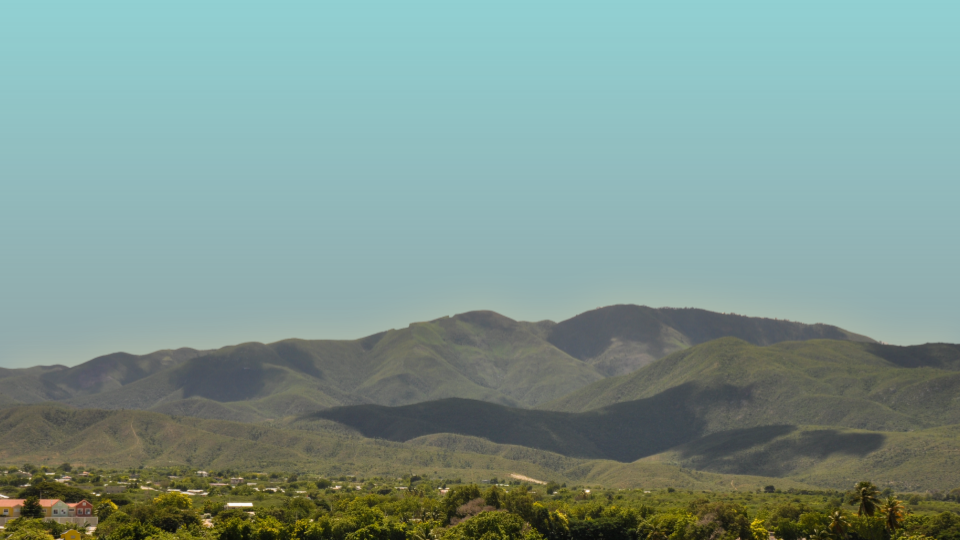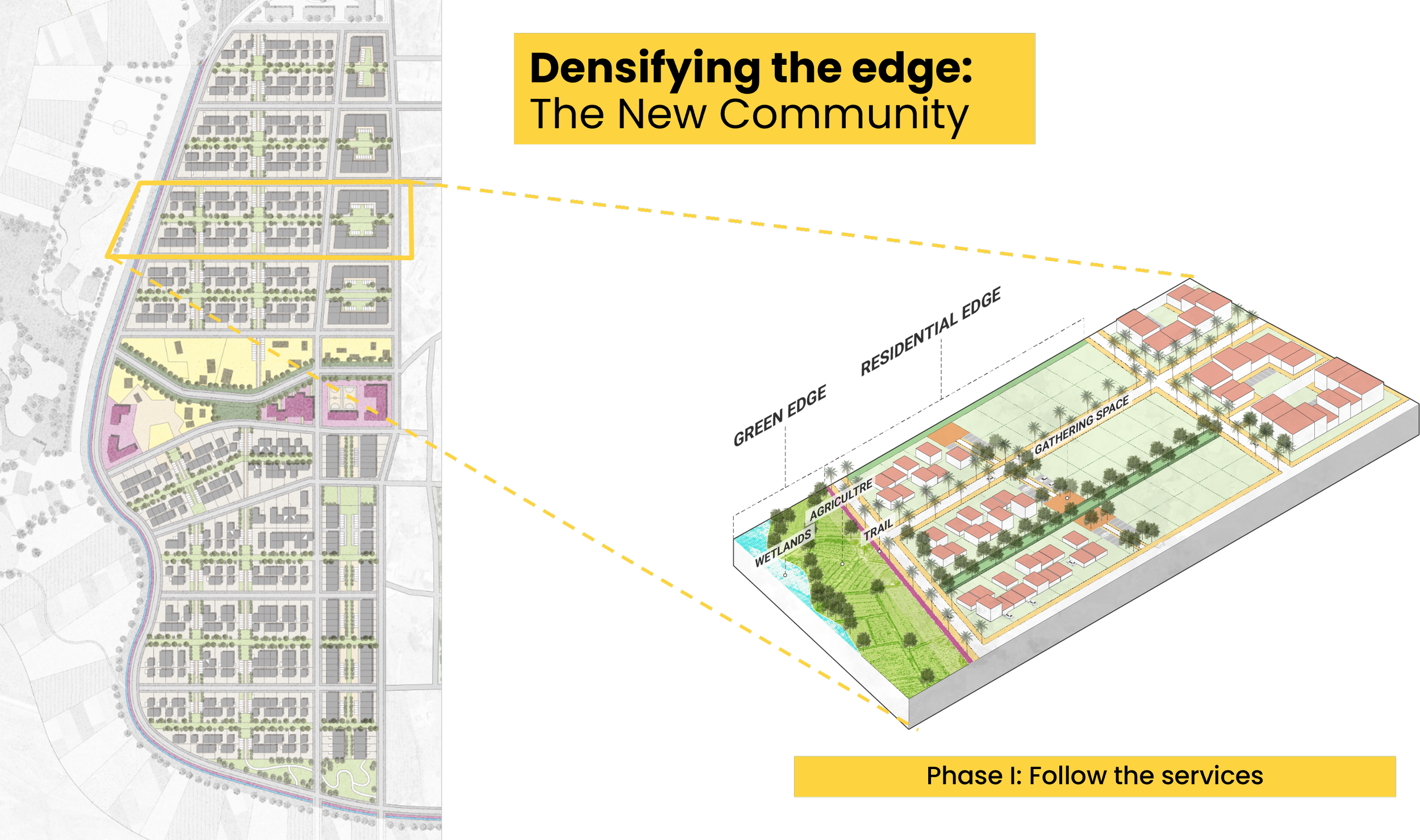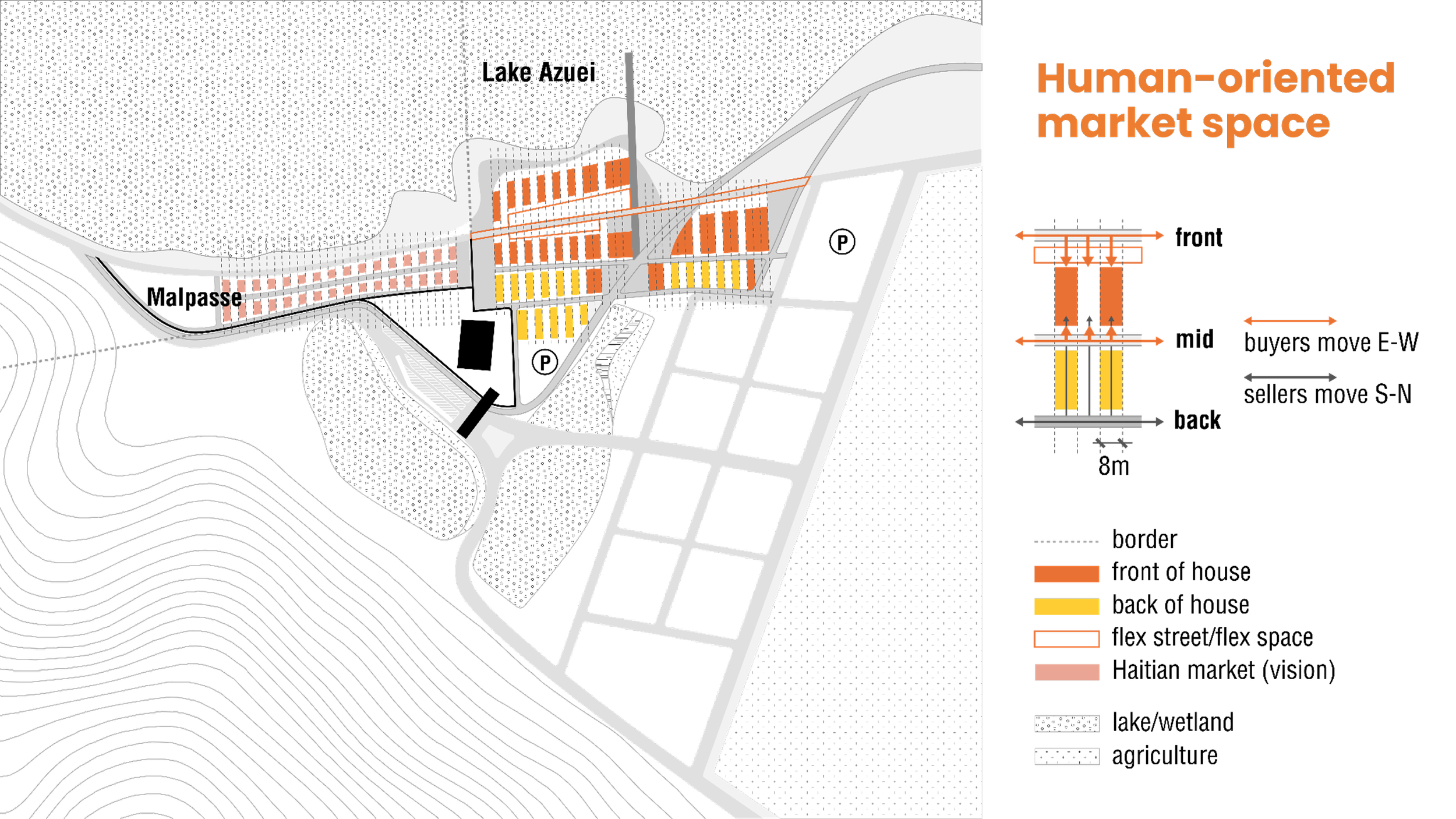
Population: 18,466
Located in the valley between Lake Enriquillo and Lake Azuei in Independencia Province, Jimaní is a major transnational connection to Haiti’s capital city of Port Au Prince, which is only 33mi away.
The Context
Natural Systems
With its ample greenery, wetlands, and breathtaking mountain views, Jimaní is ecologically rich. However, water quality and access are issues for most residents. Rainfall cannot be depended on for agriculture, and only 1/4 of households have indoor plumbing. To work around this, residents use siphons to pipe water from underground.
-
Flood plains
Steep, unstable landforms
Deforestation
Dry riverbed
-
Siphons
Wetlands
Vistas
Lake Azuei
Proximity to National Parks
Socioeconomic Systems
With its majority-youth population, Jimaní is poised for economic growth and stronger Dominican-Haitian relations. Agriculture and binational trade are major economic drivers. Given its proximity to Port-au-Prince, Jimaní’s binational market handles the largest volume of merchandise trade between the DR and Haiti, providing a source of income for locals and contributing to the overall $500M+ in annual binational trade profits. However, traffic congestion, poor circulation, and heavy military presence at the market all pose serious safety issues.
Urban Systems
Jimaní’s neighborhoods feature vibrant architectural styles with brightly painted homes, wide setbacks, and decorative fences. However, large parts of the city lack a formal grid, impeding organized growth. Many homes—particularly those built after the 2004 flood, are located in isolated areas on steep slopes prone to erosion and landslides, posing risks for families. Safety is further compromised by mixed traffic and limited infrastructure, including few trees and sidewalks.
-
Poor circulation
Sprawl
Few public spaces
Access to water & electricity
-
Diverse housing typologies
Municipal Market
-
Limited educational capacity & facilities
Public health
Employment
-
Bi-national trade
Youth population
Cultural diversity
Formal grid
Agricultural lands























